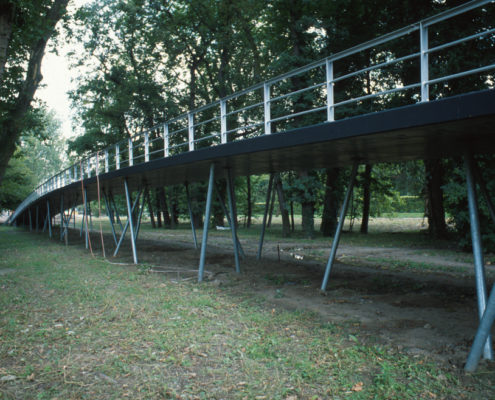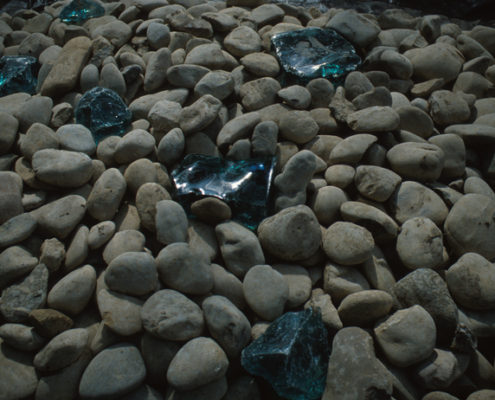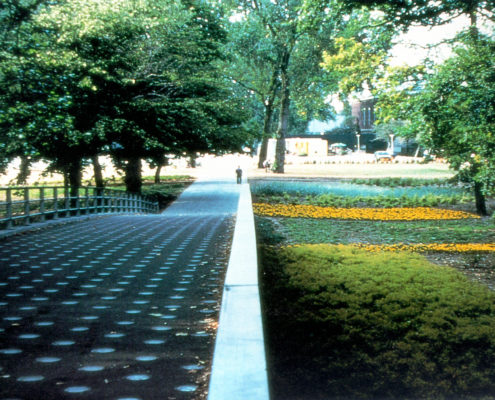The Museum Park is exposed to conflicting demands: serenity and sensation, movement and stillness, buffer zone and connector. The entire zone from the Architecture Institute to the Kunsthal is interpreted as a sequence of five equivalent situations, with two enclosed extremities (buildings) and three open-air sections in between. Next to the Boymans Museum and facing the Architecture Institute, an orchard of apple trees is planted on a diagonal grid in a field of white gravel. Their trunks are whitewashed. Compared to the brick gloom of the Boymans Museum this white vestibule; seems overexposed in its lightness, an effect reinforced by the mirror wall of the podium.
Tags: Classic, Landscape, Rotterdam, Urbanism
The podium is a raised repository of polluted earth next to the Boymans rose garden; its black tarmac surface is an abstracted fragment of the city. To receive travelling shows, circuses and other performances it is equipped with an electrical grid and other services. Small patios assert the «park» condition: black bamboo, the fluorescent yellow of the Salix viminalis willow, a curtain of monumental and weeping sequoias. A ramp leads from the podium to the park. The old and beautiful trees of the abandoned park are kept. A river of colossal white pebbles and blue grass rocks flows into an existing pond. The ground around the trees has been scraped and turned into a field of ornamental shrubs and flowers including bulbs, perennials and annuals. The trunks of certain trees will be covered with flowering creepers (Hydrangea petiolaris and Clementis montana), blurring the distinction between the original trees and the new interventions. A black concrete bridge leaps over the seasonal waves of color and texture; pedestrians can look but do not have to trample the beauty below.
Information provided in part by: Rem Koolhaas







